
* In the 1970s, the US Navy obtained a turbofan-powered carrier-based anti-submarine warfare aircraft, the Lockheed "S-3 Viking", to replace the piston-powered Grumman S-2 Tracker. The Viking provided outstanding service for the Navy through the rest of the century, proving adaptable to a wide range of roles. This document provides a history and description of the S-3 Viking. A list of illustration credits is provided at the end.
* In the 1960s, the Soviet Navy's switch to nuclear-powered submarines that could hide beneath the waves indefinitely rendered existing US Navy anti-submarine warfare (ASW) assets, such as the Grumman S-2 Tracker carrier-based sub hunter, increasingly ineffective. In late 1966, after two years of consideration, the Navy issued a requirement for a new, more capable carrier-based ASW aircraft under the "VSX" program. A team led by Lockheed beat a Grumman-led team, with the Lockheed team awarded a contract in August 1969 for development of the VSX as the twin-turbofan "S-3A".
The Lockheed team also included Ling-Temco-Vought (LTV) and Univac Federal Systems. LTV was particularly important in the partnership, since Lockheed didn't have much experience in building carrier-based aircraft and needed LTV's assistance to do the job. LTV built the engine pods, landing gear, tail assembly and wings; Univac put together the ASW electronics suite; Lockheed built the fuselage, and performed final integration and test of all aircraft elements.
The initial contract specified delivery of two static-test aircraft, six (later eight) flight prototypes, and modification of a Lockheed P-3 Orion sub-hunter to test the S-3A avionics suite. The development program was highly structured, with the Navy stepping Lockheed through a sequence of checkpoints and milestones. Lockheed's development of the Air Force C-5 Galaxy transport had been troublesome, though USAF procurement bungles had played a role in the difficulties, and the Navy wanted to make sure things stayed on track.
The first "YS-3A" prototype performed its initial flight on 21 January 1972, with Lockheed test pilots John Christiansen and Lyle Scheafer as pilot and copilot respectively. Things went well, leading to award of a Navy contract for the first production batch of S-3As in April 1972. Carrier qualifications began in November 1973. The S-3A, by this time formally named "Viking", began Navy service with training squadron VS-41 at NAS North Island, San Diego, California, on 20 February 1974. That led to introduction to operational service with squadron VS-21 in 1977. By modern standards, the Viking development program was an outstanding success, taking less than nine years to go from contract award to operational service.
* The S-3A was a compact aircraft, designed with efficiency and not high performance in mind. It had a high swept wing and a conventional swept tail arrangement. Each wing mounted a General Electric TF34-400 turbofan with 41.3 kN (4,210 kgp / 9,275 lbf) thrust, similar to the TF34 engine used by the Fairchild A-10 Warthog close-support aircraft. Early S-3A production featured the TF34-2 variant, with the same power levels but not as reliable. The TF34s provided plenty of thrust and had excellent fuel economy.
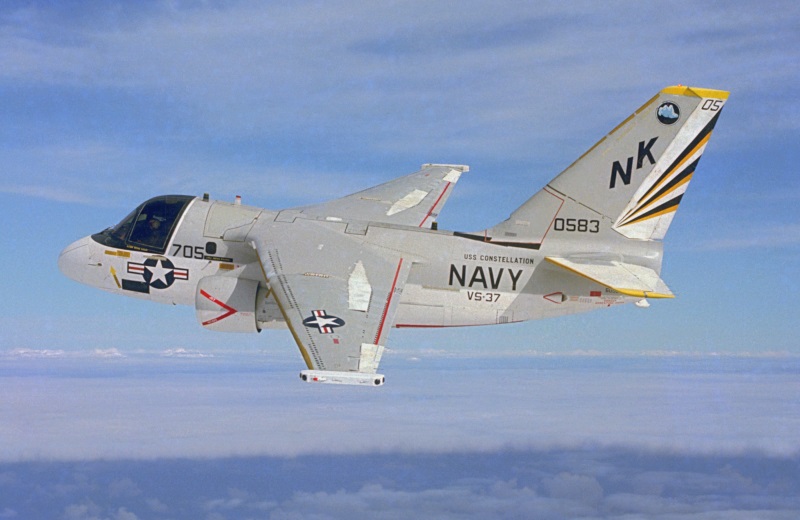
The Viking's wings folded up hydraulically outboard of the engines for carrier deck storage, with the wing fold angles slightly staggered so the wings would overlap each other in a "crossed arms" arrangement. All the Viking's internal fuel was stored in the wings between the wing folds. The tailfin hinged down to the left for carrier hangar-deck clearance. Each wing had a leading-edge sweep of 15 degrees, and featured a leading-edge flap outboard of the engines; a wide-span single slotted rear-edge flap inboard of the aileron; a set of spoilers on top of the wing; and a spoiler / airbrake under the wing. Tail flight control surfaces were conventional. There were trim tabs on both ailerons and elevator surfaces.
Four crew were carried in a pressurized cockpit, with all four facing forward in a 2-by-2 arrangement. The pilot was in the left forward seat; the copilot sat in the right forward seat; a "sensor operator (SENSO)" sat in the left rear seat; and a "tactical coordinator (TACCO)" sat in the right rear seat. Cockpit indicators were generally analog. The pilot and copilot had stick instead of yoke controls. All four crew sat on McDonnell Douglas Escapac E-1 "zero-zero (zero altitude zero speed)" ejection seats. The pilot and copilot positions featured extensive cockpit glazing, but there was only a tinted "postage stamp" window on each side of the fuselage for the back-seaters, to permit them to concentrate on their display systems. The crew entered through a small door at the rear of the cockpit, which opened downward on the right side of the fuselage, with the door featuring built-in steps. Since the door was clearly a tight fit, the canopy side windows could be jettisoned to allow the crew to climb out in a hurry if the need arose.
A mid-air refueling probe could be extended from a port directly above the windshield. The Viking had tricycle landing gear, with single wheel main gear retracting in and back into the fuselage, plus twin-wheel nose gear that retracted backwards and also provided a catapult attachment. As mentioned, LTV built the landing gear: the nose gear was derived from that of the A-7 Corsair II, while the main gear was derived from that of the F-8 Crusader. A yoke-style arresting hook was fitted under the rear fuselage.
___________________________________________________________________
LOCKHEED S-3A VIKING:
___________________________________________________________________
wingspan:
20.93 meters (68 feet 8 inches)
wing area:
55.6 sq_meters (598 sq_feet)
length:
16.26 meters (53 feet 4 inches)
height:
6.93 meters (22 feet 9 inches)
empty weight:
12,090 kilograms (26,650 pounds)
loaded weight:
23,830 kilograms (52,540 pounds)
max speed at altitude:
835 KPH (520 MPH / 450 KT)
service ceiling:
10,670 meters (35,000 feet)
range:
3,700 kilometers (2,300 MI / 2,000 NMI)
___________________________________________________________________
The aircraft carried a comprehensive ASW avionics suite:
The ASW suite was linked together by a Univac 1832 (AN/AYK-10) digital processor, a refinement of the Univac 1831 used on the P-3C Orion. Sensor integration was taken to a higher level than seen in earlier ASW aircraft, with the whole being more powerful than the simple sum of its parts. For example, the computer system stored a library of sensor "signatures" that could be searched to determine the best match with a set of sensor inputs. The Viking was, by the standards of the time, a technological marvel.
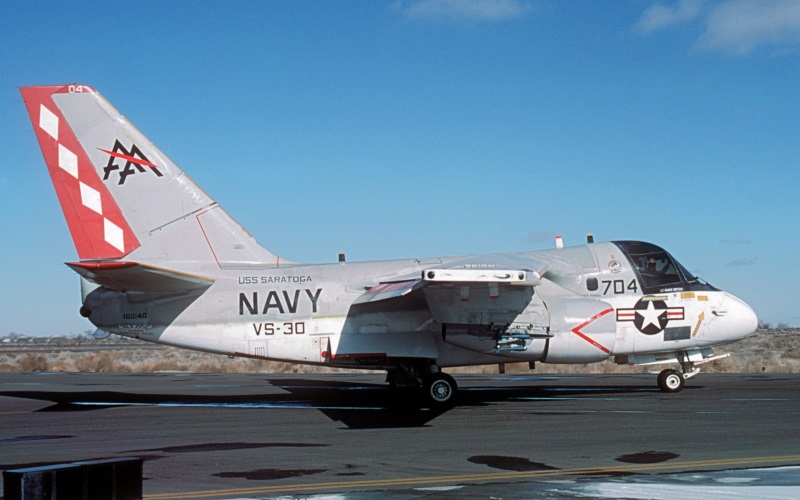
As far as other avionics went, the Viking carried a set of short-range UHF radios and a long-range HF radio, with voice encryption capabilities, along with a radio datalink. An autopilot system and a standard identification friend or foe system were fitted as well. Long-range navigation was provided by a Litton AN/ASN-92 inertial navigation system (INS), complemented by a TACAN radio beacon navigation system and a Doppler navigation radar. Finally, the Viking also carried a radar altitude warning system and an automatic carrier landing system.
While the Viking had no built-in armament, it had a weapons bay on each side of the belly between the nose gear and the sonobuoy tube array. The two weapons bays could accommodate 1,815 kilograms (4,000 pounds) of stores, including bombs, mines, depth charges, or homing torpedoes. There was also a stores pylon outboard of each engine, just inboard of the wing fold. Each pylon could handle up to 680 kilograms (1,500 pounds) of stores, such as unguided rocket pods, cluster munitions, countermeasures gear, or 1,135-liter (300 US gallon) external fuel tanks. Multiple ejector racks (MER) could be fitted to carry up to three mines or bombs on each pylon.
Overall, the Viking was a huge improvement over the Grumman Tracker. The S-3 could cover three times the search area, carry twice the warload, and had a vastly more effective avionics suite. Despite the jump in capability, its deck footprint was only 8% greater than that of the Tracker's. A total of 187 S-3A Vikings, including the YS-3A prototypes, was built up to end of production in 1978.
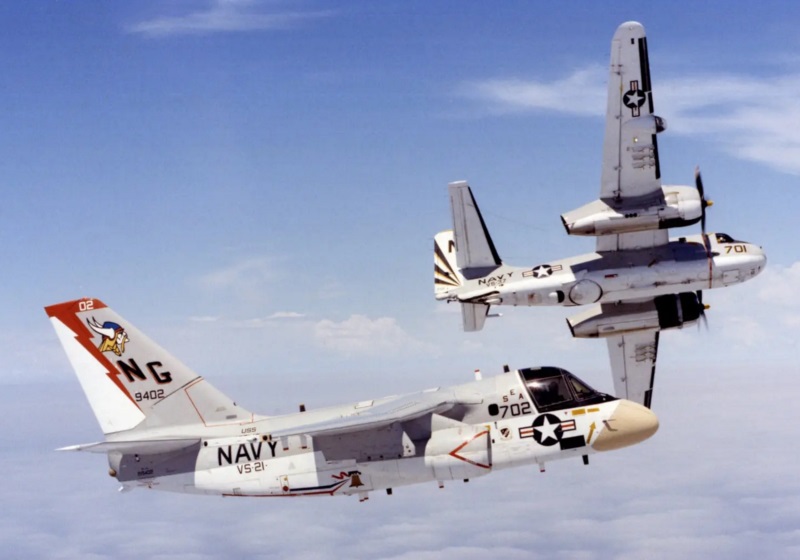
The S-3A proved to be very docile, pleasant to fly even at heavy take-off weights -- as well surprisingly agile, with a tight turning circle. It had tame "engine-out" performance, the aircraft flying properly with only a slight increase of throttle on the surviving engine; the big tailfin kept yaw from being a real problem. The S-3's relatively large wing area did make the Viking susceptible to gusts, which could be a nuisance for carrier landings. The large wing also made the S-3 a bit reluctant to drop down to the deck on landings, the other side of the coin of an aircraft that's eager to get into the air.
Although Lockheed tried to sell the Viking to Germany and Japan, there were never any export sales of the type -- though the Canadian CP-140 patrol aircraft was based on Viking avionics, fitted into a P-3 airframe. No other new-build Vikings were produced, but the S-3A would prove an excellent basis for further modification into a wide range of roles outside of ASW, demonstrating the sound design of the type.
BACK_TO_TOP* One of the interesting derivatives of the "stock" S-3A was a modification for the "carrier on-board delivery (COD)" cargo / personnel transport role. Lockheed initially proposed a major redesign of the Viking for COD operations, featuring a longer and wider fuselage with a rear loading ramp and accommodations for 30 passengers, plus more powerful engines to handle the bigger airframe. The Navy didn't buy the idea, so Lockheed came up with a minimum-change solution, originally designated the "S-3A(COD)" but then redesignated "US-3A". Combat avionics were removed, with a color navigation radar and a LORAN-Omega navigation beacon receiver installed. The seats for the SENSO and TACCO were also yanked, though a place was installed for a loadmaster. The US-3A could carry six passengers or up to 2,125 kilograms (4,680 pounds) of cargo internally in a cargo hold with 7.6 cubic meters (10 cubic yards) of usable space. It could be fitted with either an external tank or a cargo pod under each wing, depending on if the mission demanded range or load.
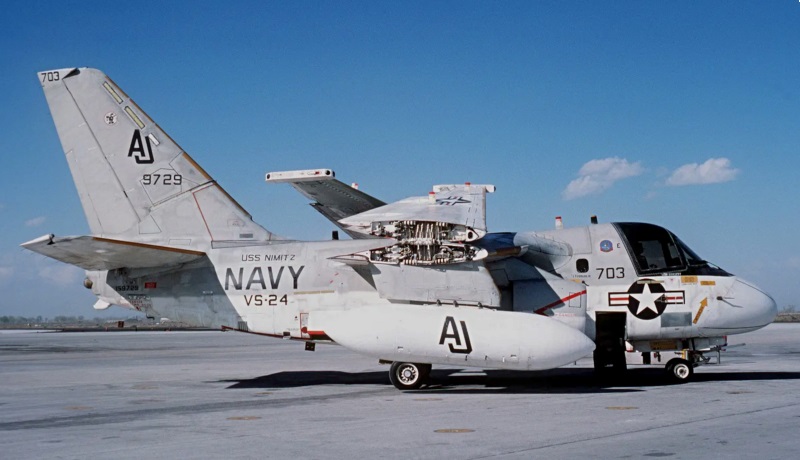
One of the original YS-3A Viking prototypes was converted as a demonstrator, performing its first flight on 2 July 1976. The Navy was impressed, but decided to standardize on the Grumman C-2A Greyhound instead. However, the Navy did acquire six more US-3A conversions to meet a specialized COD requirement. They provided service during the Gulf War, but were retired in the mid-1990s. One was lost in a crash. The US-3A's cargo pods, known as "blivets", were carried on other Viking variants on rare occasions, so they are not a perfect recognition feature.
* Beginning in 1979, Lockheed tried to sell a dedicated tanker version of the Viking to the Navy. Combat systems were removed, with the tanker fit featuring a conformal fuel tank in each of the two weapons bays; an external fuel tank under each wing; two internal hose-drogue assemblies; and two ground refueling points, to allow the aircraft to be "topped off" faster. The "KS-3A", as it was designated, would be able to carry 16,588 liters (4,382 US gallons) of fuel, that total including the load normally carried in the internal wing tanks.
One of the YS-3A prototypes was converted as a demonstrator for the configuration, with flight tests performed in 1983. The tests went well, but the Navy didn't buy that idea either, and the demonstrator ended up being converted to one of the US-3A COD machines. However, from 1984 Vikings would spend a good part of their career operating in the tanker role, using the D-704 "buddy" refueling pod stored on the left underwing wing pylon, the right pylon being fitted with an external fuel tank. Flight crews had mixed emotions about spending so much air time in the tanker role: the logos of various major petroleum firms were painted on the buddy pods as an editorial on the matter.
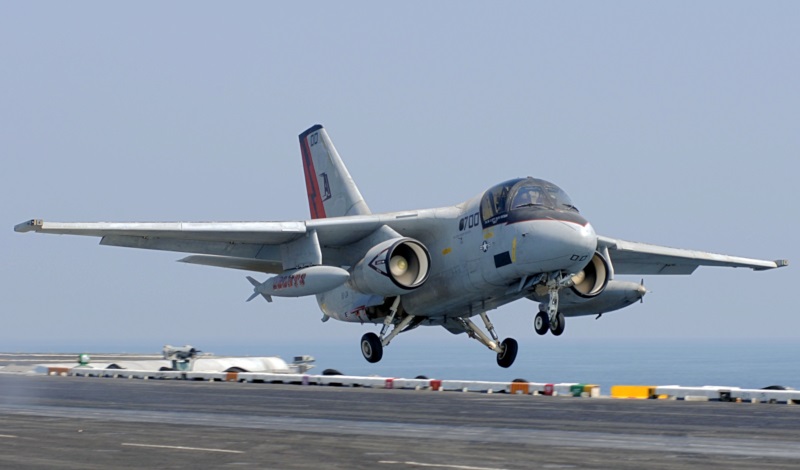
* In 1977, Lockheed proposed a "signals intelligence (SIGINT)" variant of the S-3 called the "Tactical Airborne Signal Exploitation System (TASES)". The Navy wasn't interested at the time, but a decade later the service came back and asked Lockheed to investigate the idea in more detail. This led to a contract in 1989 to convert 16 S-3As into the "ES-3A Sea Shadow" SIGINT configuration.
The conversion involved removal of the S-3A's sonobuoy launchers and MAD gear. The AN/APS-116 radar was replaced by the improved Texas Instruments AN/APS-137(V)1 radar, which was an update of the old AN/APS-116, most significantly adding a "Mode 4" for "inverse synthetic aperture radar (ISAR)" imaging operation. An ISAR uses the target's motion to effectively increase the area of the radar aperture and provide a crude radar image. The ISAR mode gave the ES-3A a limited ability to recognize ships by class.
The OR-86 FLIR was replaced by a TI OR-263 FLIR, not much more capable than the OR-89, but far more reliable. The ES-3A of course featured a comprehensive SIGINT suite; the AN/ALR-47 ESM of the S-3A was replaced by an improved AN/ALR-76 system, but apparently crews found it of little use and preferred the Shadow's manually directed AN/ALR-81 ESM. The bomb bays were faired over and used to store electronic gear, while a total of 60 antennas and antenna fairings were mounted on the top and bottom of the aircraft. The most distinctive fit was of a "canoe" fairing on top with a drum fairing on top of that, plus a matching drum fairing on the bottom, with the drums used for a rotating direction-finding system. Of course the operator stations were completely changed, avionics were upgraded overall, and some improvements were made to the pilot and copilot positions. However, the flight controls were removed from the copilot's position, a decision that was apparently not at all popular.
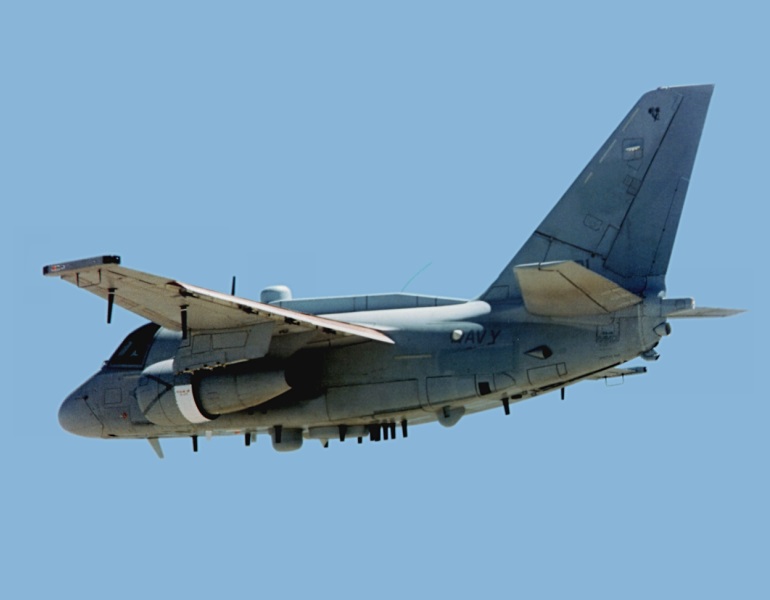
One of the original Viking static-test airframes was used as a mockup, and one of the YS-3A prototypes was used as an aerodynamic test airframe, with all the antenna fairings but ballast in place of the actual SIGINT kit. Initial flight of the first functional prototype ES-3A was on 15 May 1991, with J.V. DeThomas at the controls and flight test engineer Dave Laughlin checking over the systems. Initial deployment of the Shadow was in 1993, with the last delivery in 1994.
The ES-3A was substantially heavier than the S-3A, and of course all the antennas caused drag, so the Shadow was slower than the original Viking, with its top speed cut by about ten percent. In SIGINT operations, the Shadow could obtain an "electronic order of battle" to create a map of types of adversary emitters and their locations, and also monitor adversary communications. The ES-3A would be tasked with the tanker role as well.
However, the ES-3A's operational life was short. In 1998, the Navy decided to phase out the fleet of Shadows by the end of 1999. The decision was rationalized by development of the "Joint Airborne SIGINT Family (JASF)", an advanced SIGINT package being designed under a joint Navy, Air Force, and Army program. In principle, the emergence of JASF meant that the ES-3As would have to be upgraded to make them compatible, and instead of shouldering the expense, the Navy decided to phase out the Shadows. In reality, the JASF program went nowhere.
Airframe life was also a consideration in the retirement of the Shadow. The S-3As used for the conversions had fairly high-time airframes, and the tanker mission had helped burn up the retaining airframe life of the ES-3As.
BACK_TO_TOP* In 1981, the US Navy awarded Lockheed a contract for a "Weapon Systems Improvement Program (WSIP)" to upgrade the combat avionics and weapons carriage capabilities of existing S-3As. Two initial WSIP "S-3B" conversions were used for flight evaluations, with initial flight of the first conversion on 13 September 1984. Formal conversions began in early 1987, with initial service redelivery of an upgraded machine in December of that year. A total of 119 conversions was performed in all, with the last reaching service in 1994.
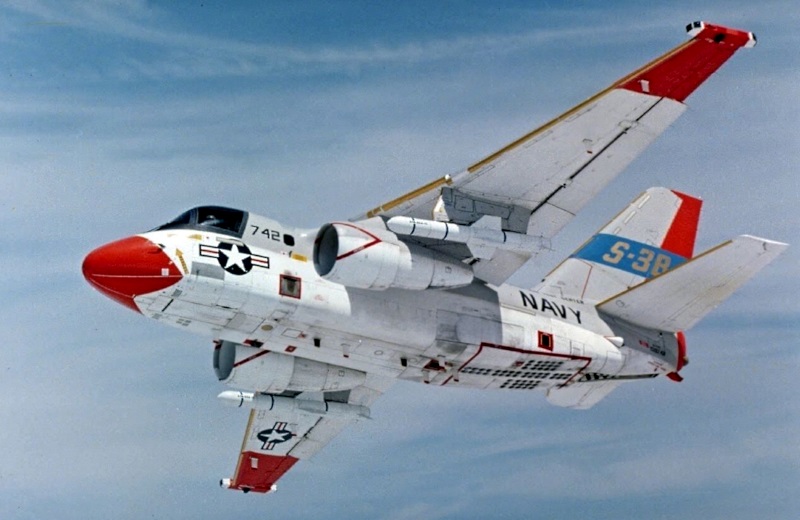
The S-3B retained the airframe and engines of the S-3A, and the two variants appeared almost identical externally. Changes included:
The improved radar and Harpoon carriage gave the S-3B a much enhanced attack capability against surface vessels, allowing targets to be identified and engaged from stand-off range. The new sensors also increased the usefulness of the Viking for the search and rescue mission. The new systems of the S-3B were much more reliable overall than those they replaced, reducing maintenance overhead and improving uptime.
The S-3B saw extensive service during the Gulf War in 1991. The S-3B operated heavily in the tanker role and performed many air strikes, attacking Iraqi radar sites, antiaircraft artillery sites, patrol boats, and other targets. One Viking even bombed a patrol boat with a buddy tanker store. The pilot became too focused in his dive on the target and accidentally released the pod along with his bombs; no doubt, he didn't live it down for the rest of his career. S-3Bs also operated as ELINT platform to target emitters for other strike platforms, and dropped TALD glider decoys to confuse Iraqi defenses, demonstrating the great flexibility of the machine.
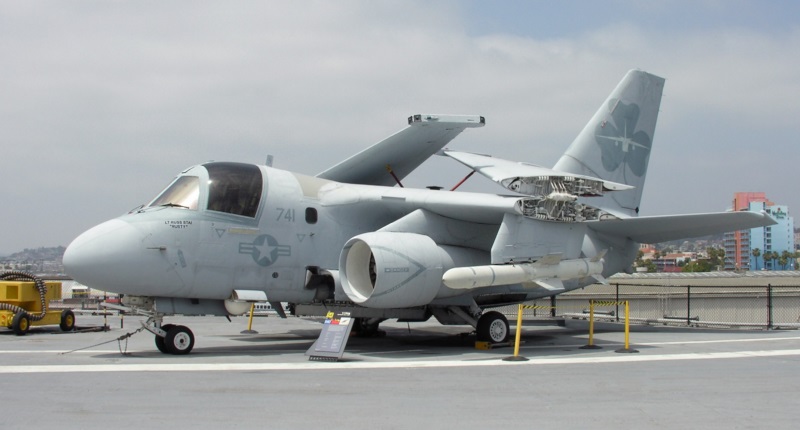
Vikings served in other conflicts after that time, including operations in the Balkans and the Afghan War in 2001:2002. In peacetime operations, S-3Bs sometimes flew in a multi-role configuration, carrying two iron bombs and two homing torpedoes in the bomb bay, with a Harpoon missile under one wing and a tanker pod under the other, allowing the aircraft to instantly react to a wide range of circumstances.
* In the early 1990s, Lockheed proposed new production of a dedicated tanker version of the S-3B, of course known tentatively as the "KS-3B". It was similar in concept to the KS-3A, though it was to use a buddy refueling pod to carry its hose assembly instead of having it built in. The Navy didn't bite on this idea either, and it never got to the demonstration stage. A proposal for an airborne early warning (AEW) version of the Viking was another non-starter. However, several "special mission" modifications of the S-3B were implemented as "proof of concept" projects, with these machines including:
* Although the US Navy obtained the S-3 strictly as an ASW aircraft, the service found such a "flying truck" to be very useful, so much so that the Viking was sometimes called the "Swiss Army Knife". However, despite its usefulness, the S-3 was finally phased out.
The aircraft were simply getting too old; to keep them in service would have meant refurbishing the airframes and updating their systems. The Navy did fly two demonstrators for the Viking "Surveillance System Upgrade (SSU)" beginning in 1999, with these aircraft featuring a state-of-the-art AN/AYK-23 processor, an updated JTIDS, and in particular an AN/APS-137(V)5 radar that added a high resolution SAR-MTI mode. In a sense, this resurrected the Gray Wolf Viking, giving the S-3B a high resolution radar capability and a fast datalink to provide information to battle commanders and hand off targets to other platforms. However, although it appears that late in life some minor updates, like a GPS receiver, were fitted to the Viking fleet, there was no approval for a major refit, and by February 2009 the Vikings were all out of fleet service.
A handful were retained by the Navy for support duties, but the last of them were retired at the beginning of 2016. One other S-3B -- the very last Viking built, in 1978 -- was passed on to the US National Aeronautics & Space Administration's (NASA) Glenn Research Center in Ohio in 2004, to be refurbished and painted in natty NASA blue-and-white colors for test and trials duties, focused on icing and other air safety issues.
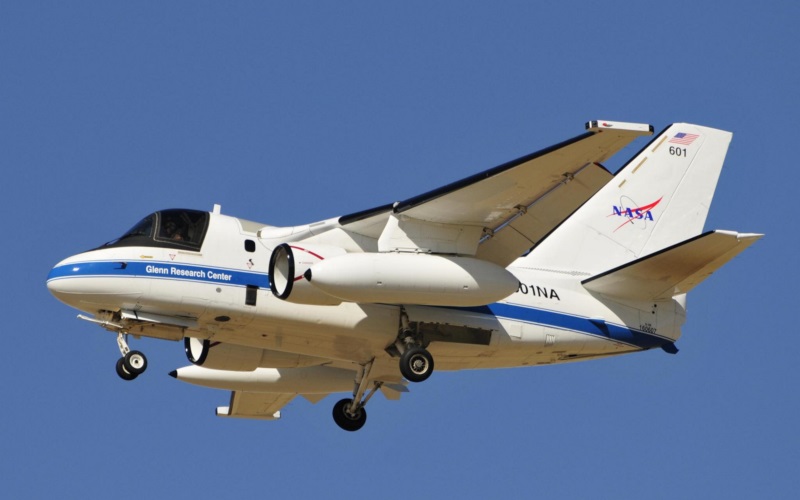
The NASA Viking was refitted with weather radar and a new transponder, with communication, navigation, and electrical system updates. It began test flights in 2008. NASA also acquired one of the Navy's S-3Bs retired in 2016. NASA only flies its test aircraft intermittently and tends to keep them for a long time, but the agency finally retired the Viking in 2021. There was talk of selling refurbished S-3s, but nothing came of the matter.
The Navy did consider a replacement for the Viking, the "Common Support Aircraft (CSA)", which was to be in the same size and class as the S-3 series. While the Viking had been designed as a dedicated ASW aircraft and was adapted to a wide range of roles, the CSA was to be designed from the outset as a multi-role machine, performing such duties as ocean patrol, ASW, airborne early warning, COD, SIGINT, and so on.
However, the Navy also had higher-priority programs, such as the F/A-18E/F Super Hornet fighter; the F-35 Joint Strike Fighter; and what would become the Boeing P-8 Poseidon maritime patrol aircraft, to replace the P-3C Orion. The Super Hornet was superior to the Viking for the strike role, and made a perfectly adequate tanker, while the ASW mission was seen as of declining performance in an era of "brushfire" wars. There simply wasn't enough money available to fund the CSA as well. The CSA program was shelved and forgotten.
BACK_TO_TOP* One of the little footnotes to the Viking story is that, on 1 May 2003, US President George W. Bush rode the copilot's seat of an S-3B from San Diego to land on the USS ABRAHAM LINCOLN offshore in the Pacific. The S-3B was marked "Navy One" for the occasion. Bush tended to attract controversy and there was some sniping at such "grandstanding", but the relevant point here was that it was apparently the first time a current US president had performed an arrested landing or "trap" onto an aircraft carrier. Presidents often visit aircraft carriers, but they usually arrive by helicopter. Of course, George W. Bush's father and also a president, George Herbert Walker Bush, made plenty of traps when he was the pilot of a Grumman Avenger torpedo bomber in World War II.
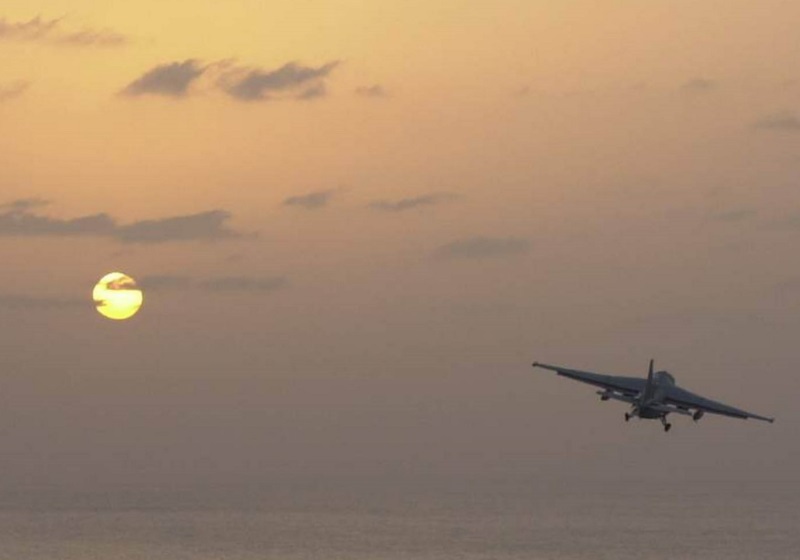
* Sources include:
* Illustrations credits:
* Revision history:
v1.0.0 / 01 jan 05 v1.0.1 / 01 may 05 / Minor corrections. v1.0.2 / 01 apr 07 / Review & polish. v1.0.3 / 01 may 09 / Viking retirement. v1.0.4 / 01 apr 11 / Review & polish. v1.0.5 / 01 mar 13 / Review & polish. v1.0.6 / 01 feb 15 / Review & polish. v1.0.7 / 01 jan 17 / Review & polish. v1.0.8 / 01 dec 18 / Review & polish. v1.1.0 / 01 nov 20 / Illustrations update. v1.2.0 / 01 sep 22 / Added illustrations. v1.2.1 / 01 jun 24 / Review & polish. (+)BACK_TO_TOP
